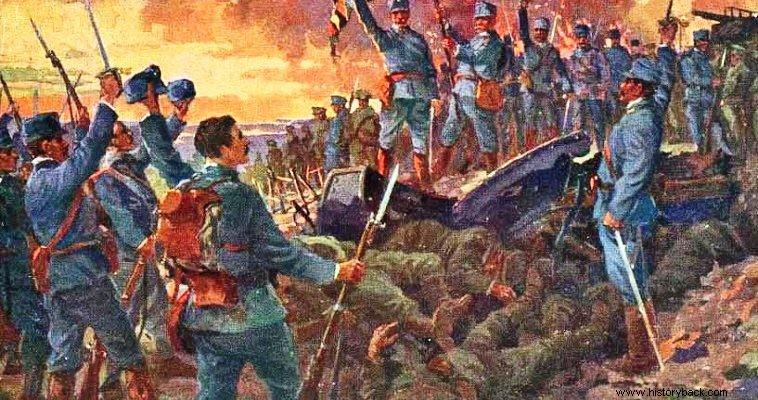
At the end of 1915 on the Eastern Front the Austrians, with German help, had pushed the Russians deep into Poland and Galicia (western Ukraine). The Russian army had suffered terrible losses. Tsar Nicholas II who had personally, in theory, assumed command of his army but this did not have any serious opposition.
The tsar was completely unrelated to the military and took command under the influence of his wife, who in turn was influenced by the schemer Rasputin . On Christmas Eve 1915, at the southern end of the Galician front, the Austro-Hungarian 7th Army of General Karl von Pfancher-Baltin with the two armies of the Russian Southwestern Front (formation corresponding to the army group) of General Ivanov, with the 7th and 9th Armies, under Generals Sherbachev and Letchitsky, respectively.
Russian attack
The Russians had decided to attack with the 9th Army at the southern end of the Austrian front, in the area of responsibility of General Korda's Austrian 8th Army Corps (SS) in order to convince the Romanians to join the ANTANT. The SS in question was particularly strained from previous battles and the majority of its men were older reservists. Against these forces the Russian 9th Army extended three SS and plenty of artillery. On December 23, 1915, the Russian offensive began. In the first echelon, the Russians involved four infantry divisions (MP) – 64 battalions.
The Austrian commander knowing the weakness of his troops, numerical and qualitative, had taken his measures. Initially having indications of the impending Russian attack he removed his men from their first trenches and placed them in the second line of defense.
So when the Russian artillery literally pulverized the Austrian first line of trenches , killed but few men. also von Korda had concentrated his available artillery – about 100 guns and howitzers – in three "intervention" groups. The Austrian gunners had previously marked the ground and had arranged their shots on the main axes from which the Russians would necessarily move.
Hell
The Russians, having managed with losses to gain some ground that the Austrians had practically abandoned, launched on December 27 their main attack. But then all hell broke loose. The Russian artillery with a stupid obsession continued to fire at the empty Austrian front line. But as soon as the Russian infantry rushed out, they received overwhelming fire from the opposing artillery.
With horror the Russian soldiers watched their colleagues being dismembered and their limbs flying into the air. Under these conditions, the Russian attack was stopped in its tracks. However, Letchitsky continued on 28 December with disappointing results, with the Russian artillery always unable to arrange its fire and effectively support the hapless infantry. On December 29, the Russians launched a new attack, executed in the same way, which of course failed.
Under these conditions, Ivanov decided to throw his 7th Army into battle, further north, against the Austrian 6th SS . The Russian offensive in this area began on the night of December 28 and continued until January 1, 1916 with tragic results for the Russians. It was an unprecedented massacre where 18,000 Russians were killed, wounded or captured against only 800 Austrians.
"After preparing our artillery we advanced about 1,500 meters under enemy artillery fire. When we got to 500m from the enemy position we received machine gun and rifle fire. The enemy manned intact trenches protected by 10 belts of barbed wire and was waiting for us.
"For hours we were lying in enemy territory. We could not help the wounded as we were too close to the enemy positions…”, reported a Russian officer, lucky enough to have survived the slaughter.
Million
The Russian attack continued in spite of this. The Russian 9th Army managed to break into the position of the Austrian 8th SS on January 11, 1916, after first an entire Russian infantry division had been annihilated. When a few days later the Russian infantry they managed to reach the lines of the Austrian artillery, due to tragic coordination, they were exterminated by the fire of their own artillery. The Austrians took advantage of the Russian sloppiness and counterattacked to regain the lost ground.
Despite the overwhelming defeat, the tsar, canonized by the Russian Church in 2000, ordered the offensive to continue. However, his staff managed to convince him of the futility of the attack. The inglorious Russian invasion of Galicia is over. The Austrians had around 30,000 casualties. The corresponding Russian ones, however, approached 100,000 men.
